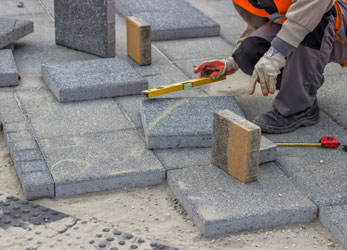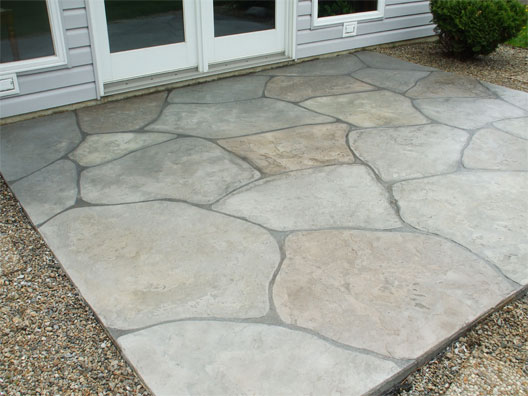No matter what kind of concrete repair you need, it’s important to have all the facts before getting started. Here is everything you need to know about concrete repairs, from the basics of concrete mix design to the different types of cracks that can form in concrete.
Concrete is a composite material made of cement, aggregates (sand, gravel, or crushed stone), and water. The proportions of these ingredients are typically expressed in terms of ratios by weight.
For example, a concrete mix might be designed with a 1:2:3 ratio of cement to sand to gravel. This indicates that for every 1 pound (lb) of cement used in the mixture, 2 lb of sand and 3 lb of gravel will also be used.
The type of cement used in the concrete mix is important for the strength and durability of the finished product. The most common type of cement used in concrete is Portland cement, but there are other types, such as white Portland cement, that can be used for specific purposes.
The aggregates in the concrete mix can also be divided into two categories: coarse and fine. Coarse aggregates are typically larger pieces of gravel or crushed stone, while fine aggregates are smaller pieces of sand.
The water in the concrete mix is also an important ingredient, as it helps to bind the other ingredients together and gives the concrete its workable consistency. Too much water in the mix can make the concrete too weak, while not enough water will make it too dense and difficult to work with.
The ratio of water to cement in the concrete mix is known as the water-cement (w/c) ratio. A lower w/c ratio means that there is less water in the mix, which results in a stronger finished product.
Concrete can be poured into any shape or form, which makes it a versatile material for construction projects. However, this also means that concrete can crack if not properly supported.
There are three main types of cracks that can occur in concrete: plastic shrinkage cracks, drying shrinkage cracks, and settlement cracks.
Plastic shrinkage cracks occur while the concrete is still curing and drying, and are caused by evaporation of the water from the surface of the concrete. These cracks are typically shallow and not very wide.
Drying shrinkage cracks occur after the concrete has cured and dried, and are caused by the contraction of the concrete as it loses moisture. These cracks can be deeper and wider than plastic shrinkage cracks.
Settlement cracks occur when the ground underneath the concrete settles or shifts, causing the concrete to crack. These cracks can be very deep and may run all the way through the concrete.
If you notice any cracks in your concrete, it’s important to have them repaired as soon as possible. Cracks can weaken the concrete structure and cause further damage if left untreated.
Several methods can be used to repair cracks in concrete, depending on the severity of the damage. For small cracks, a patching compound can be used to fill in the crack and prevent water from seeping through.
For larger cracks, a concrete sealant or epoxy can be used to fill the crack and provide structural support. In some cases, it may also be necessary to remove and replace sections of the cracked concrete.
If you’re not sure how to repair your concrete, it’s best to consult with a professional contractor who specializes in concrete repairs. They will be able to assess the damage and recommend the best course of action for your particular situation.
Taking care of your concrete will help to extend its lifespan and prevent costly repairs down the road. With proper maintenance, your concrete should last for many years to come.
FAQ About Concrete Repairs
Q: What is the best way to repair cracks in concrete?
A: The best way to repair cracks in concrete will depend on the severity of the damage. For small cracks, a patching compound can be used to fill in the crack and prevent water from seeping through. For larger cracks, a concrete sealant or epoxy can be used to fill the crack and provide structural support. In some cases, it may also be necessary to remove and replace sections of the cracked concrete.
Q: How do I know if my concrete needs to be repaired?
A: If you notice any cracks in your concrete, it’s important to have them repaired as soon as possible. Cracks can weaken the concrete structure and cause further damage if left untreated.
Q: How often should I have my concrete inspected for damage?
A: It’s good to have your concrete inspected by a professional every few years to check for any signs of damage. If you live in an area with extreme weather conditions, it may be necessary to have your concrete inspected more frequently.
Q: Can I repair concrete myself?
A: Homeowners can do smaller repairs, but a professional contractor should complete larger repairs. If you’re not sure how to repair your concrete, it’s best to consult with a professional before attempting any repairs.




